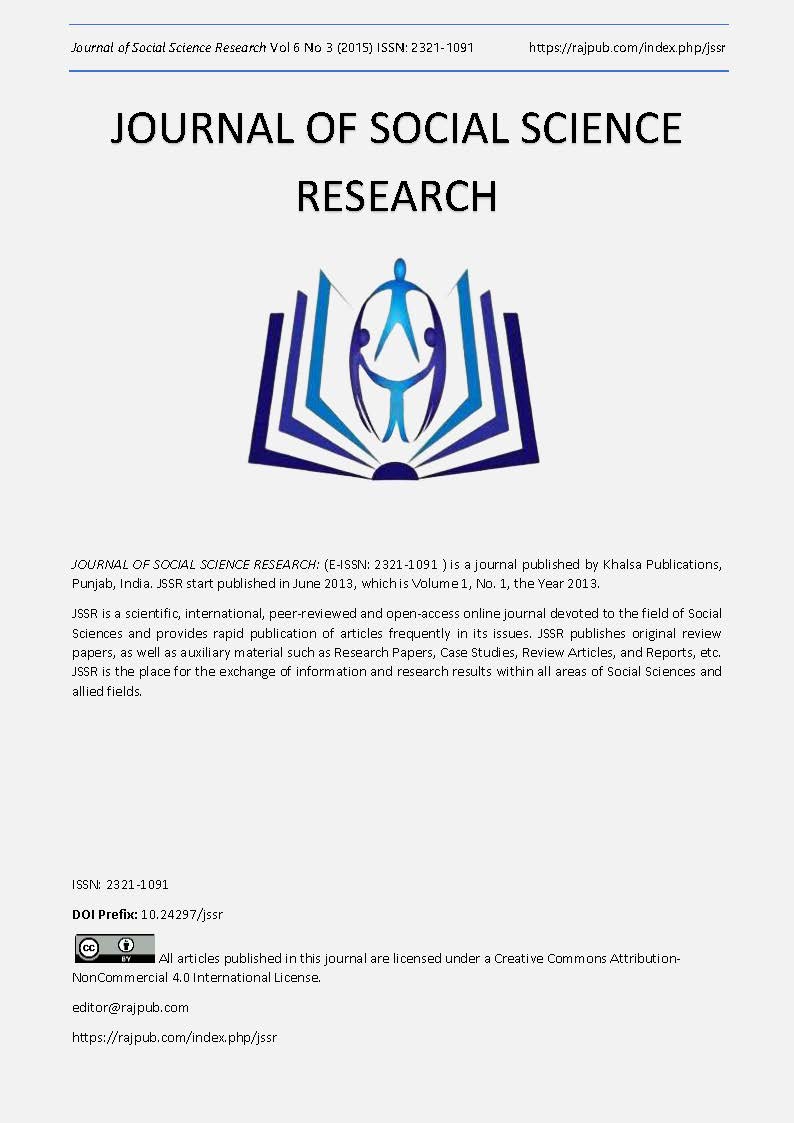Freedom Movement and the Fourth Estate- Gandhian Perspectives
DOI:
https://doi.org/10.24297/jssr.v6i3.3505Abstract
Mohandas Karamchand Gandhi has today become an iconic figure, a symbol of many things for many people. He is seen variously as the great opponent of European Colonism,as a champion of civil rights for racial, religious and other minorities, as an important critic of the industrial system of production, as a great pacifist, or as a person who stood for the need to resist injustice in a non-violent way. In the process, he developed the new technique of civil resistance now universally known as Satyagraha. His political, social and spiritual development during those years led to his manifesto of 1909-Hind Swaraj or Indian Self-rule a work that was considered so scandalous by the British. Gandhi returned to India in 1915 and after a period of settling in soon established himself as a champion of the peasantry, leading to confrontations with white indigo planters in Champaran in 1917 and the colonial tax bureaucracy in Kheda in 1918.He also led a successful strike in Ahmedabad. In 1917 he staged his first all India protest-the Rowlatt Satyagraha and followed this in 1920 by gaining control over the Indian National Congress and launching the Non-Cooperation Movement in which Indians withdrew their support for British Colonial institutions. This was followed in later years by two more powerful confrontations with the British-the Civil Disobedience Movement of 1930-1934 and the Quit India Movement of 1942.These movements were reflected through the Press which is the powerful media which forms the predominant role in molding the information of the public opinion. It reflects the political and socio-economic opinion of the people and emerges as an important source of information for framing the political scenario of a nation or a region according to the nature of its publication.
Downloads
Downloads
Published
How to Cite
Issue
Section
License
 All articles published in Journal of Advances in Linguistics are licensed under a Creative Commons Attribution 4.0 International License.
All articles published in Journal of Advances in Linguistics are licensed under a Creative Commons Attribution 4.0 International License.




